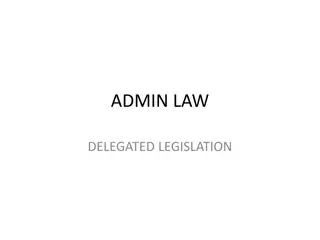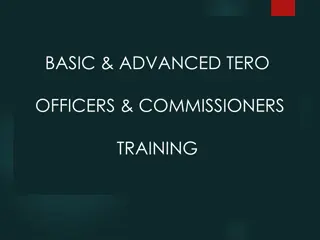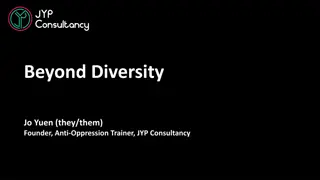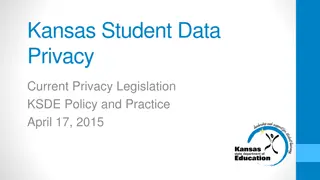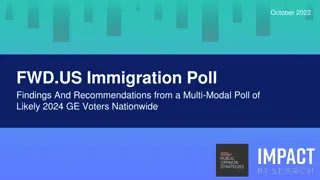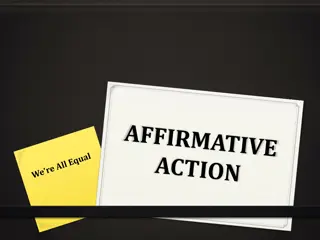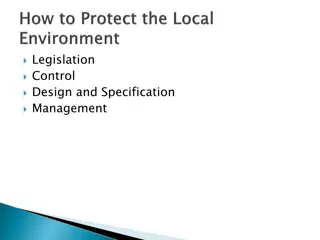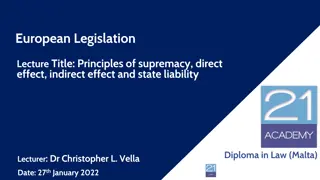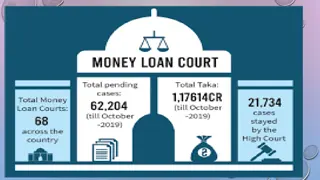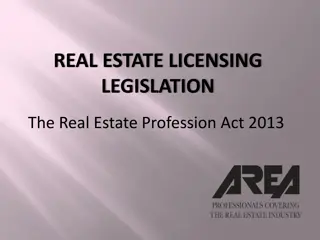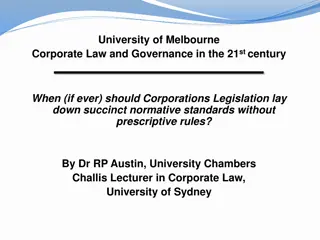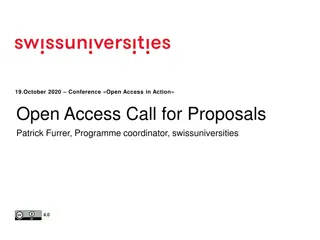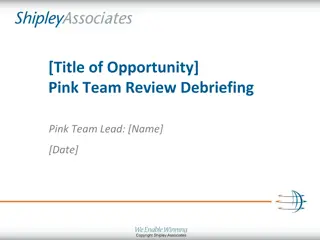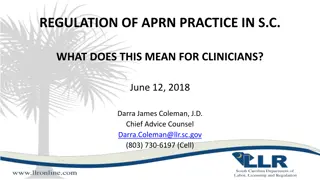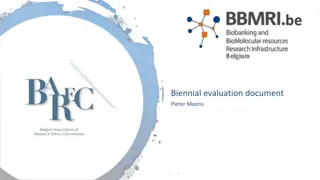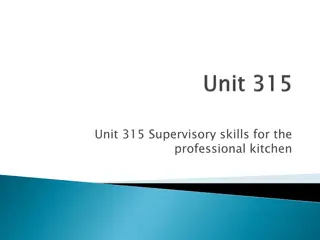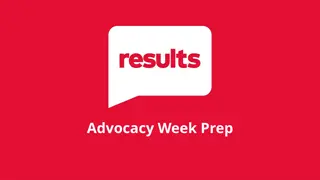Addressing Inequity Through Legislation and Action
Explore the historical pursuit of equity in the United States, from constitutional provisions to civil rights legislation. Delve into the impact of equity laws, employment tools, and affirmative action on mitigating inequity, with a focus on promoting non-discrimination and fostering diversity and inclusion.
Uploaded on Sep 09, 2024 | 0 Views
Download Presentation

Please find below an Image/Link to download the presentation.
The content on the website is provided AS IS for your information and personal use only. It may not be sold, licensed, or shared on other websites without obtaining consent from the author. Download presentation by click this link. If you encounter any issues during the download, it is possible that the publisher has removed the file from their server.
E N D
Presentation Transcript
Mitigating Inequity 6-8-19 Presentation to CAPAA Maria Batayola, Retired King County Diversity Manager Sandy Hanks, King County Business Development & Contract Compliance Manager
Presentation: 1. EQUITY LAWS 2. EMPLOYMENT TOOLS PRE & POST I-200 3. CONTRACTING TOOLS PRE AND POST I-200 4. Q& A
PURSUIT OF EQUITY 1787 CONSTITUTION 1790 BILL OF RIGHTS (ratified by all 13 colonies) All men are created equal = Males with Property 1865 on Post Civil War Constitutional Amendments: Abolished slavery Made slaves US Citizens Gave the right to vote. 1964 CIVIL RIGHTS BILL (Long hard fought struggles) Equal access to opportunities Equal access to programs, services and facilities.
CIVIL RIGHT ACT (1964, 1972) Titles Non-discrimination Sections 1. Voter Registration 2. Public Accommodations 3. Public Property 4. Public Schools 5. Expanded Civil Rights Commission 6. Government Agencies that discrimination could lose Federal Funds 7. Employment Private & Public 8. Voter Registration & Voting Data 9. Movement of Civil Rights cases from state to federal courts 10. Assistance for discrimination claims 11. Affords defendants trial by jury
EEO & AA Covered Groups Federal, State & Local Laws rule of thumb NONDISCRIMINATION RULES Race Ethnicity National Origin Religion (Creed) Sex (Maternity) Sexual Orientation (GLTBQ) Veteran Status Persons with Disabilities AFFIRMATIVE ACTION TOOLS Race Sex Veteran Status (Persons with Disabilities)
Part 2: EEO Affirmative Action in Employment Quotas are prohibited. Pre-I-200 Post I-200 EEO Notice Equitable Job Related Selection Process Affirmative Action Plans Outreach Interview Opportunity Same EEO Notice Same & explicit justification. (Title 6 v 7) Affirmative Action Plans Outreach. No supplemental recruitment Interview Opportunity. No selective certification
Response to Post I-200 Challenges Affirmative Action in Employment - the public hears Quotas. Substitute & Expanded Use of Diversity and Inclusion terms Broadened to address Title 6 service equity requirements. Creation of Race & Social Justice/Equity Programs to improve workplace culture, reach out to underserved communities and address disparities e.g. economic. I-200 Chilling Effect Community can hold public agencies accountable to their Diversity & Equity policies, ask how they are achieving them. Continue to pursue equity. *Batayola received Executive Ron Sims Recognition Award for 1-200 Stakeholder Management
Part 3: CONTRACTING TOOLS Executive Order 11246 All Contractors and subcontractors are subject to Executive Order 11246. Title VII of the Civil Rights Act of 1964, as amended (Title VII), is a Federal law that protects individuals against employment discrimination. Executive Order 11246 is similar to Title VII. It prohibits Federal contractors and subcontractors from engaging in workplace employment discrimination on the basis of race, color, religion, sex, sexual orientation, gender identity or national origin. It also requires contractors to "take affirmative action .
CONTRACTING TOOLS PRE I-200 Certification of businesses as minority or women-owned Use of Race or Gender in the Award of Public Contracts Federal Affirmative Action Programs Utilization Requirements for minority or women-owned businesses
CONTRACTING TOOLS POST I-200 Directive No. 98-01 Laudatory Goals, Outreach, and Recruitment Efforts Affirmative Action plans Certification of Businesses as Minority or Women-owned Federal Affirmative Action Programs No Preferences based on race or sex while leaving unchanged preferences for people with disabilities, for veterans, and for people over 40 years of age.
CONTRACTING TOOLS POST I-200 Training and other business assistance programs for minority and women-owned businesses Small Business Programs Equity and Social Justice Best Practices Inclusion Plans Good Faith Efforts







